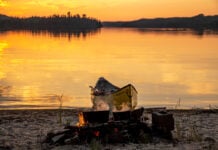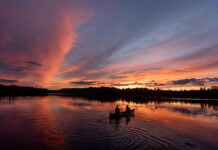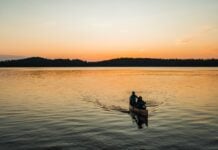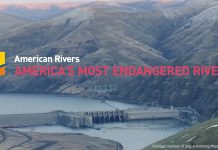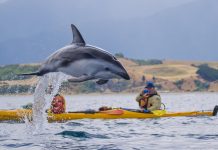We stopped for lunch on a Puget Sound beach full of oyster shells. Despite the fact I don’t really know how, I felt a strong desire to measure the thickness of their shells to see if they had been affected by ocean acidification, a side effect of climate change.
Meanwhile, record-breaking hurricanes just devastated Florida, Texas and Puerto Rico. Wildfires incinerated western forests, causing the deaths of 42 people. Heat waves swept across the country, breaking records through spring, summer and fall.
Hurricanes, fires and heat waves—and this is just what’s happening at home in the United States. Elsewhere, glaciers are receding, water levels are rising and ocean temperature is warming at such speed scientists predict all coral reefs worldwide could be bleached and dead within 30 years.
“Ninety-seven percent of researchers believe climate change is happening, and its in part due to human activity. Government action is needed. This is an emergency for more than just paddlers.”
This isn’t fake news. Ninety-seven percent of researchers believe climate change is happening, and its in part due to human activity. Government action is needed. This is an emergency for more than just paddlers.
The ability of sea kayaks to get to remote places puts us at spear’s tip of climate change science. We can collect data nobody else can. This puts us on the front lines of this war. So, let’s act like it. It’s time for kayakers to nerd out.
Access to the deep wilderness is at a premium. “Much of the data land managers and decisionmakers need is simply unobtainable any other way. They need to know how species are moving as climate shifts so they can manage habitat accordingly,” says Merrill Warren, operations and devel-opment manager of Adventure Scientists, a nonprofit pairing outdoor adventurers with scientists.
In 2014, Rob Avery, Adam Andis, Chris Lewis and Paul Norwood spent 16 days kayaking the outer coast of Alaska, to record plant and bird data and test amphibians for disease. The intimate way paddlers travel a coastline lends itself to the kind of close inspection you can’t get from remote imaging, flyovers or chartering a skiff.
“For our micro-plastics study, we needed global data from freshwater, coastal margins, and the mid-ocean, so a lot of samples came from people’s home water.”
Not all citizen science requires weeks in Alaska. “For our micro-plastics study, we needed global data from freshwater, coastal margins, and the mid-ocean, so a lot of samples came from people’s home water,” says Warren.
This need will only grow. The orange-faced guy in the Oval Office and his henchmen are cutting funding for climate research, which means more projects will rely on volunteers to collect data. Volunteers like us. To be capable data collectors, paddlers will need to cross two barriers. The first is discipline. Data has to be accurate.
“Volunteers must be committed to following strict protocols,” says Warren. Adventure Scientists puts volunteers through an eight-step process and final test before approving them for a project. When I worked for a parks department, I learned the hard way that data collected by poorly trained volunteers just sits in a filing cabinet forever. In the past, Adventure Scientists’ volunteers have been conscripted to swap cards in wildlife cameras, take water or soil samples, and retrieve data recorders.
However, there is a mindset change. “Paddlers have to see the value of going the extra step on a trip,” says Stanford researcher Lauren Oakes. From the Outer Island Expedition, Avert recalled, “do we really want to paddle six more miles up an inlet to survey the beach? Yes, we have to. We’re not on a pleasure trip.” And even when we are on a pleasure trip, we may still need to reach an island to change out data cards.
The second barrier is bigger. It’s abandoning neutrality.
The unspoken rule in paddling is that politics stops at the water’s edge. Like most outdoor sports, which emphasize self-sufficiency, paddling attracts its share of libertarians as well as back-to-nature lefties. My kayaking pals include small government conservatives, bleeding heart liberals, avid hunters and passionate vegetarians. They all get along fine on the water. However, now hyper-charged partisanship has shoved a wedge into our world.
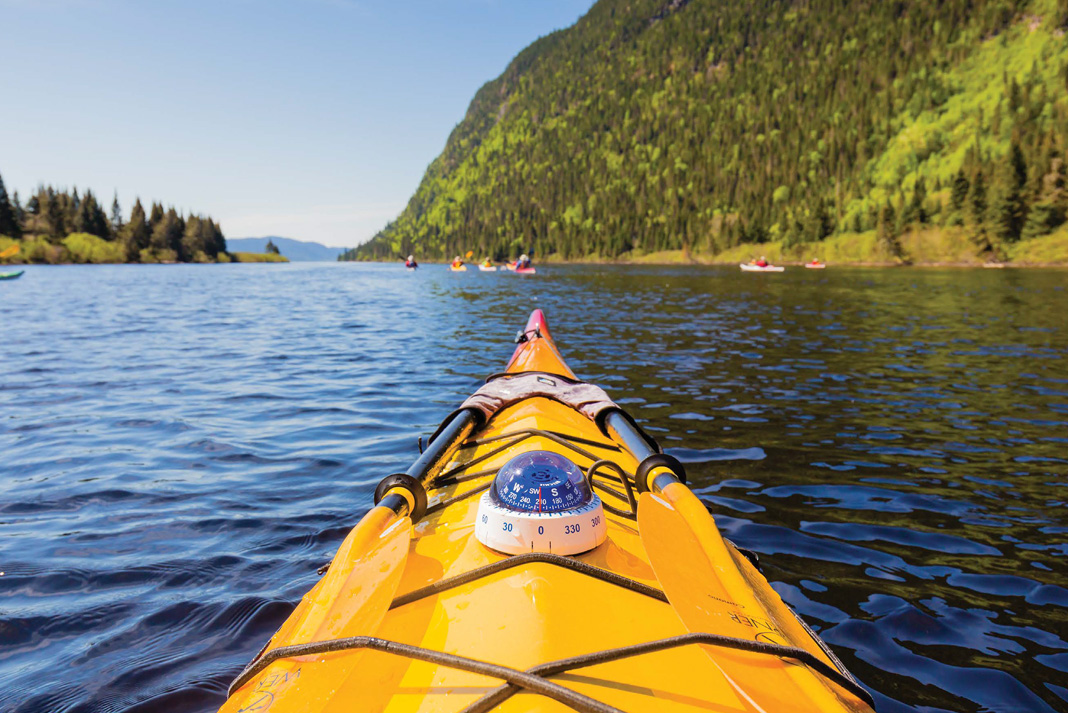
Guess what? It’s time to shed the notion we can be paddlers and pretend climate change isn’t real. It’s no more realistic than trying to be a camper and pretend mosquitos don’t exist.
We paddle on water. The temperature, carbonic acid and oxygen levels in water matter to our paddling experience. Yes, there are some aspects of politics which can remain separate from paddling, but climate change, ocean health and clean water are not on this list.
I’m sure some people will read this and dread their paddling club meetings will become contentious political debates, or every time they go paddling they’ll feel guilty for not collecting data when they’re just out having fun. I say: A little guilt can be a good motivator. Plus, being a science nerd is fun—why do you think paddlers are always trying to identify every bird and tide pool critter we see?
In wilderness survival training there’s a foundational rule which must be observed before anything else can happen. “The first step is to recognize you’re in an emergency,” I remember an instructor telling me.
Kayakers are good at this type of situation assessment—when we’re transiting a cliffed-out section of coast and the barometer plunges, or when our buddy capsizes and gets washed against the rocks. We recognize the situation for what it is and we leap into action. Let’s do that now.
Neil Schulman paddles, writes and does conservation work from Oregon. He has no idea how to measure the thickness of oyster shells, but he loves eating oysters
Ditch Your Political Compass. Navigating The Facts On Climate Science Couldn’t Be More Straight Forward. | Photo: Francis Lepine



 This article first appeared in the 2015 Paddling Buyer’s Guide.
This article first appeared in the 2015 Paddling Buyer’s Guide. 